Abstract
This article presents an analysis of study loss in a three year longitudinal study of 1816 employees at two Danish shipyards, one of which closed just before the start of the study. The aim of the study was to elucidate the health consequences of a company closedown and the subsequent job loss. The study population responded to an identical questionnaire in 1983, 1984 and 1985. The participation rate in 1983 was 73%. The percentage of drop outs in 1984 and 1985 was 15-20% of the total numbers responding in the first year. We examined this study loss in relation to the characteristics of the respondents, using the first round of data collection as a baseline. In a multivariate analysis, age and seniority at the shipyard were the only variables that were significantly associated with non-participation in 1984 and 1985. It is concluded that the drop outs did not appear to introduce a serious risk of selection bias in 1984 and 1985. A comparison between drop outs and late respondents in 1984 and 1985 did not support the supposition that information about late respondents can be extrapolated to drop outs.
Full text
PDF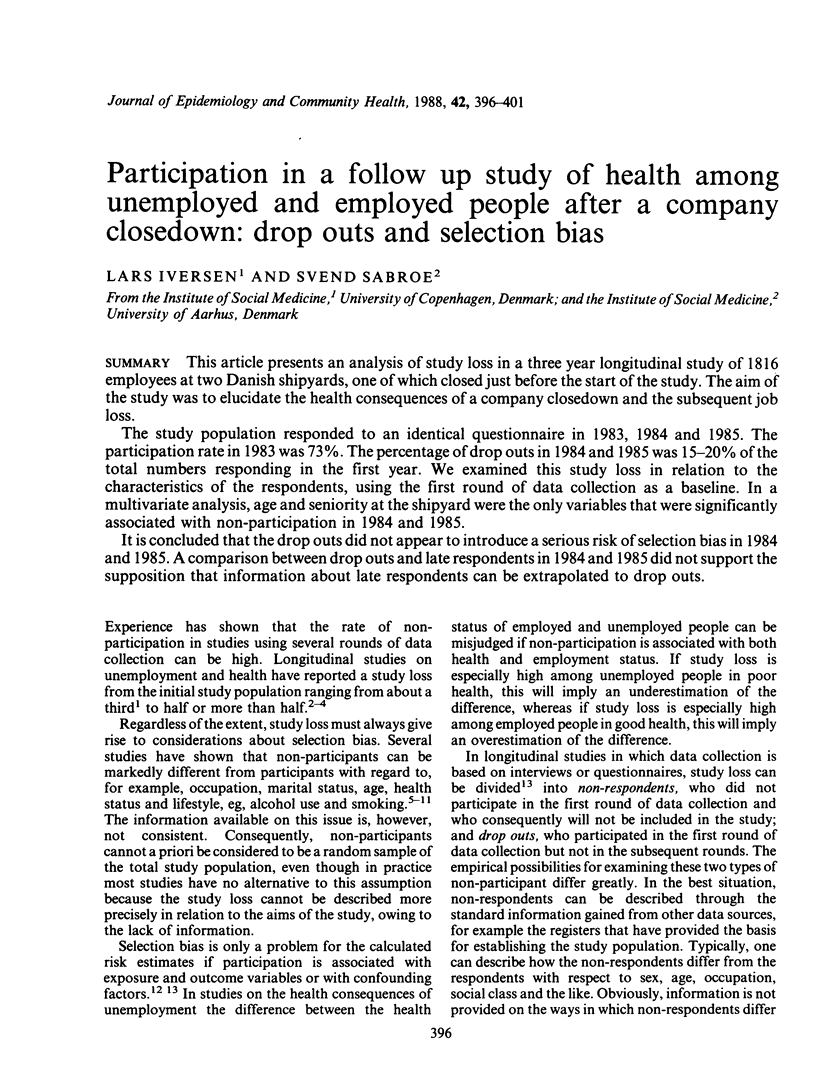
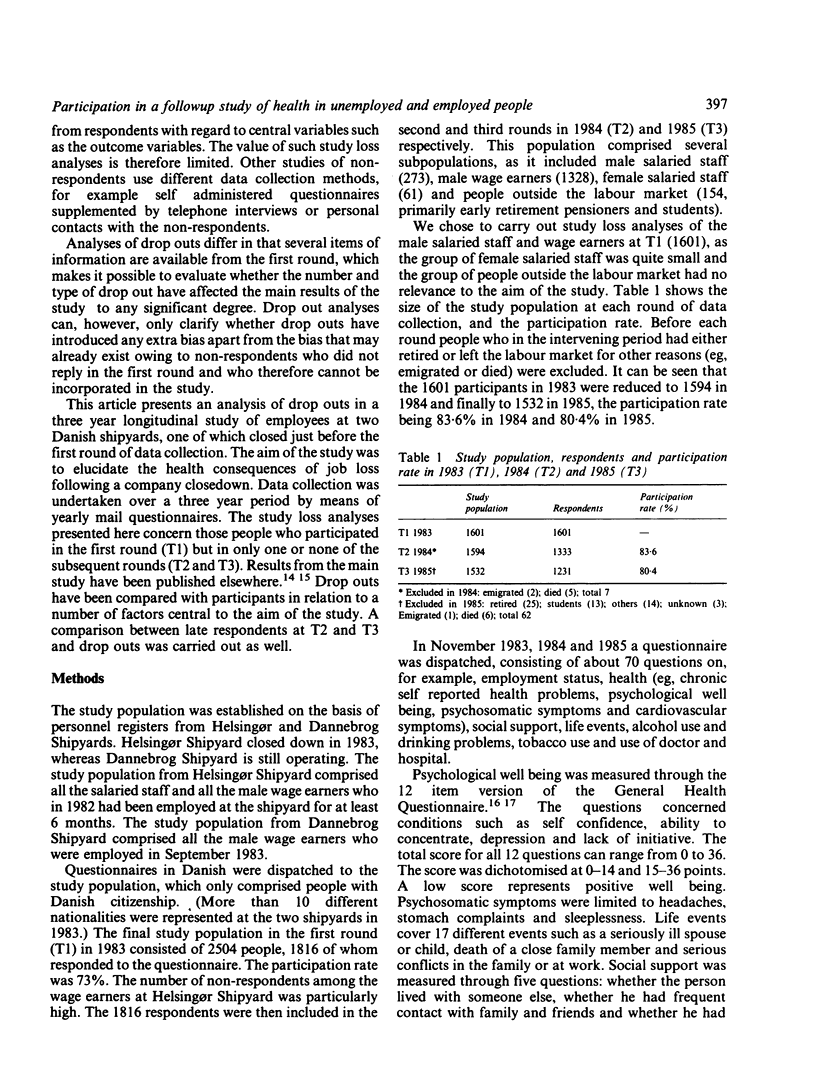
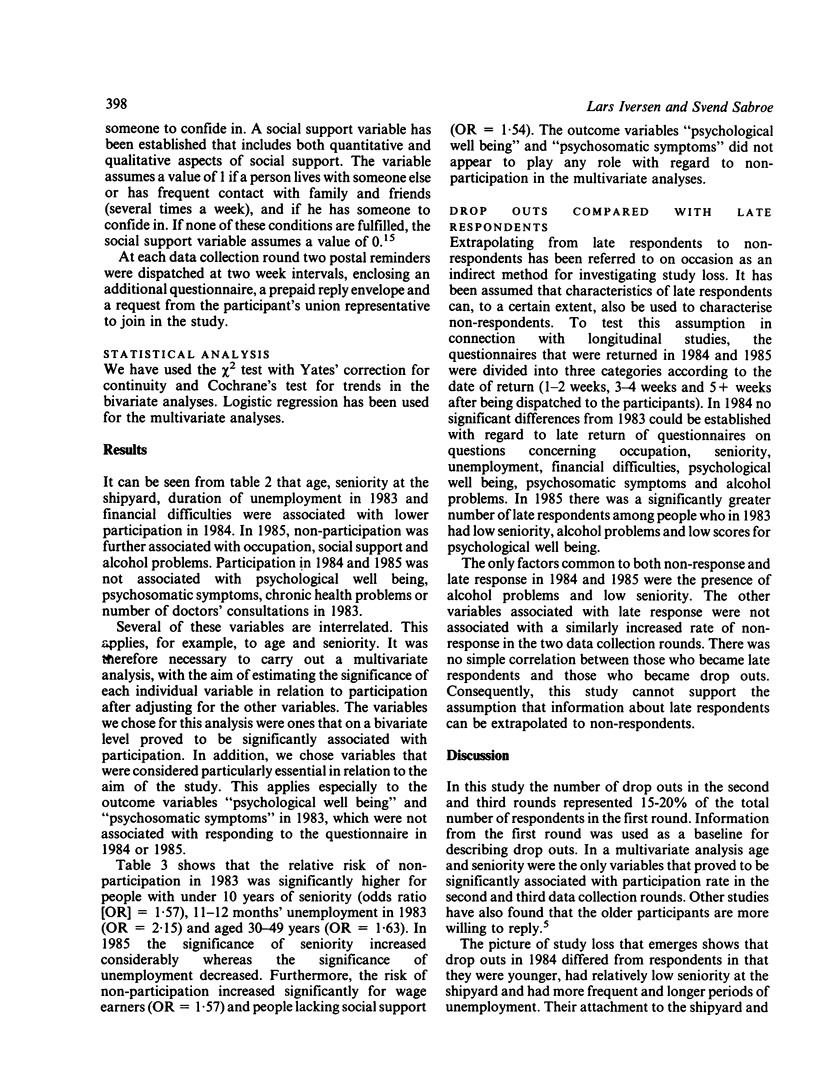
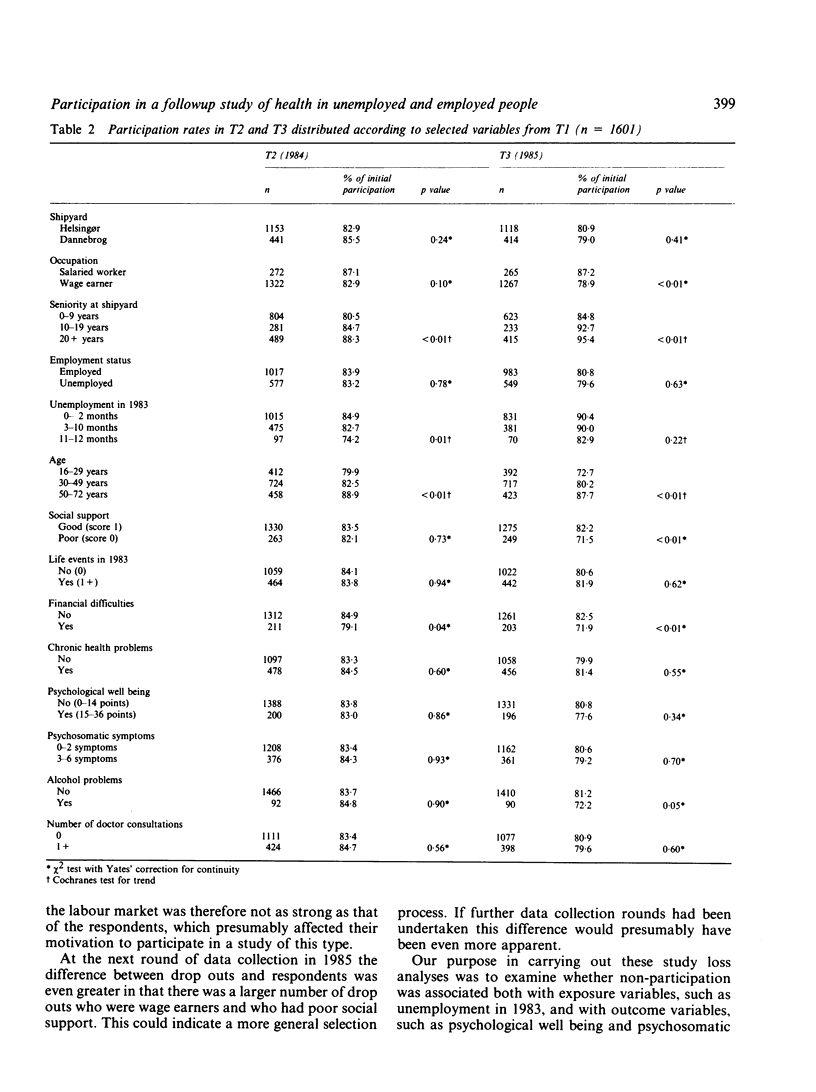
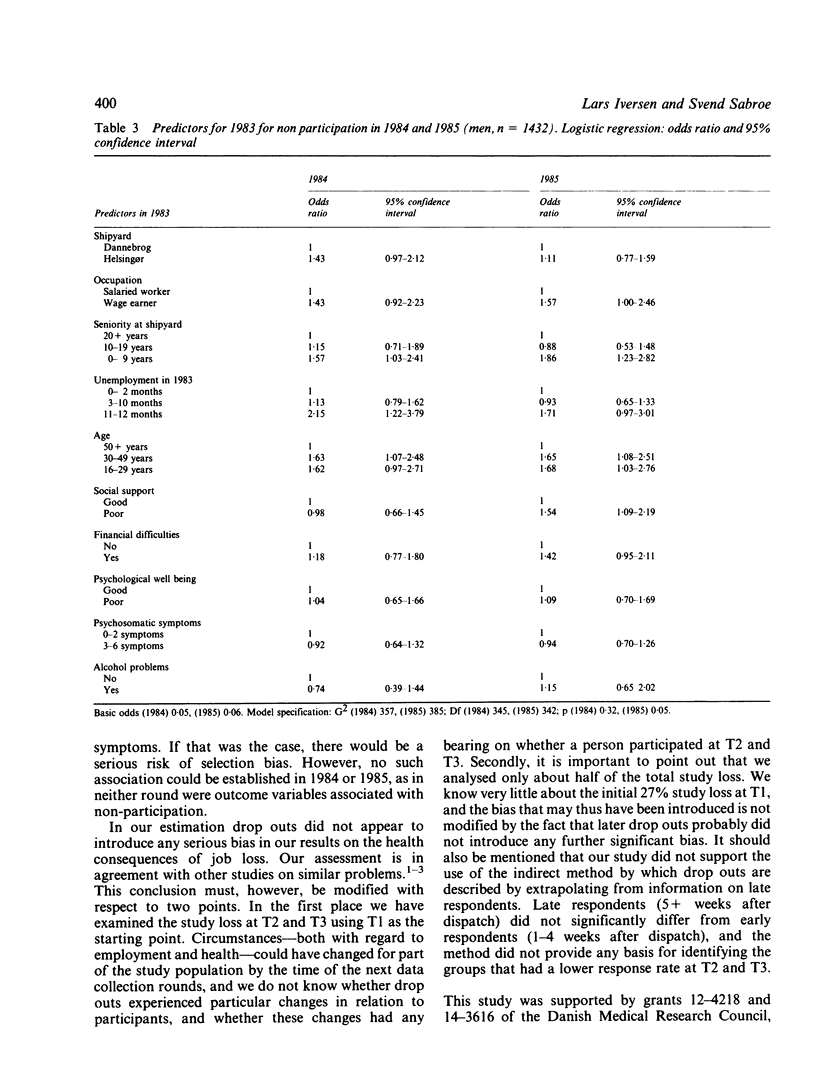
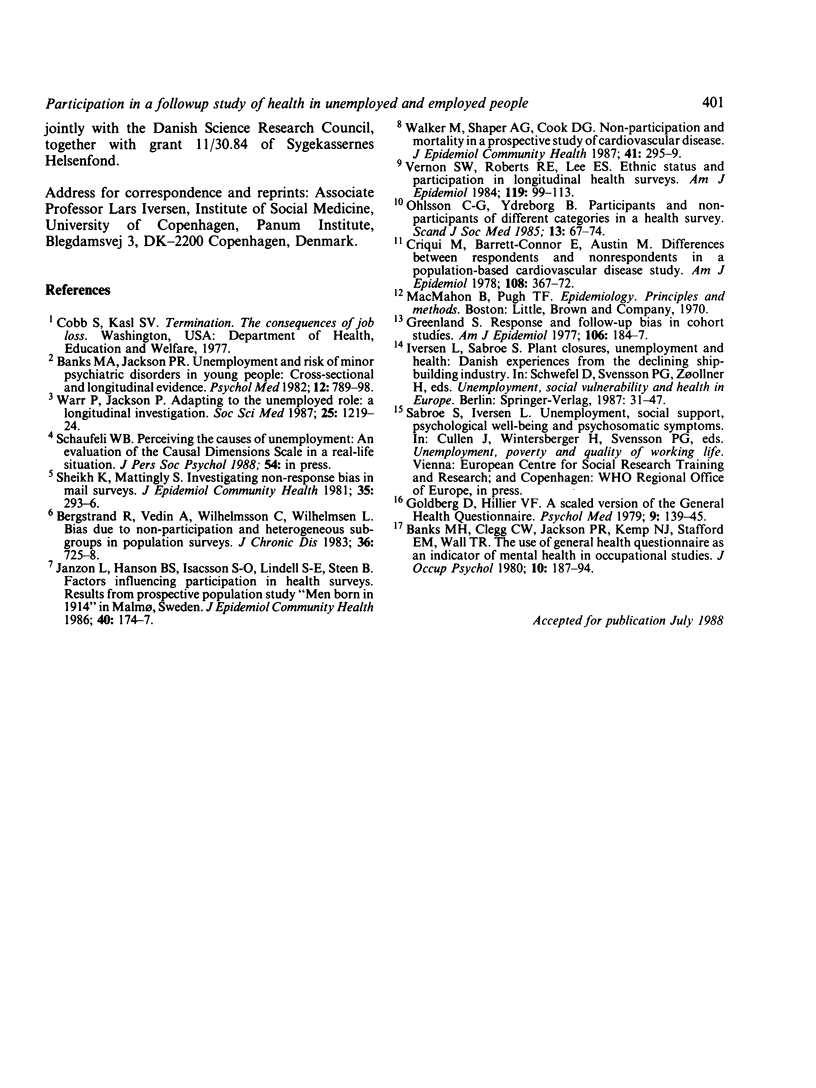
Selected References
These references are in PubMed. This may not be the complete list of references from this article.
- Banks M. H., Jackson P. R. Unemployment and risk of minor psychiatric disorder in young people: cross-sectional and longitudinal evidence. Psychol Med. 1982 Nov;12(4):789–798. doi: 10.1017/s0033291700049096. [DOI] [PubMed] [Google Scholar]
- Bergstrand R., Vedin A., Wilhelmsson C., Wilhelmsen L. Bias due to non-participation and heterogenous sub-groups in population surveys. J Chronic Dis. 1983;36(10):725–728. doi: 10.1016/0021-9681(83)90166-2. [DOI] [PubMed] [Google Scholar]
- Criqui M. H., Barrett-Connor E., Austin M. Differences between respondents and non-respondents in a population-based cardiovascular disease study. Am J Epidemiol. 1978 Nov;108(5):367–372. doi: 10.1093/oxfordjournals.aje.a112633. [DOI] [PubMed] [Google Scholar]
- Goldberg D. P., Hillier V. F. A scaled version of the General Health Questionnaire. Psychol Med. 1979 Feb;9(1):139–145. doi: 10.1017/s0033291700021644. [DOI] [PubMed] [Google Scholar]
- Greenland S. Response and follow-up bias in cohort studies. Am J Epidemiol. 1977 Sep;106(3):184–187. doi: 10.1093/oxfordjournals.aje.a112451. [DOI] [PubMed] [Google Scholar]
- Janzon L., Hanson B. S., Isacsson S. O., Lindell S. E., Steen B. Factors influencing participation in health surveys. Results from prospective population study 'Men born in 1914' in Malmö, Sweden. J Epidemiol Community Health. 1986 Jun;40(2):174–177. doi: 10.1136/jech.40.2.174. [DOI] [PMC free article] [PubMed] [Google Scholar]
- Ohlson C. G., Ydreborg B. Participants and non-participants of different categories in a health survey. A cross-sectional register study. Scand J Soc Med. 1985;13(2):67–74. doi: 10.1177/140349488501300203. [DOI] [PubMed] [Google Scholar]
- Sheikh K., Mattingly S. Investigating non-response bias in mail surveys. J Epidemiol Community Health. 1981 Dec;35(4):293–296. doi: 10.1136/jech.35.4.293. [DOI] [PMC free article] [PubMed] [Google Scholar]
- Vernon S. W., Roberts R. E., Lee E. S. Ethnic status and participation in longitudinal health surveys. Am J Epidemiol. 1984 Jan;119(1):99–113. doi: 10.1093/oxfordjournals.aje.a113731. [DOI] [PubMed] [Google Scholar]
- Walker M., Shaper A. G., Cook D. G. Non-participation and mortality in a prospective study of cardiovascular disease. J Epidemiol Community Health. 1987 Dec;41(4):295–299. doi: 10.1136/jech.41.4.295. [DOI] [PMC free article] [PubMed] [Google Scholar]
- Warr P., Jackson P. Adapting to the unemployed role: a longitudinal investigation. Soc Sci Med. 1987;25(11):1219–1224. doi: 10.1016/0277-9536(87)90369-8. [DOI] [PubMed] [Google Scholar]


